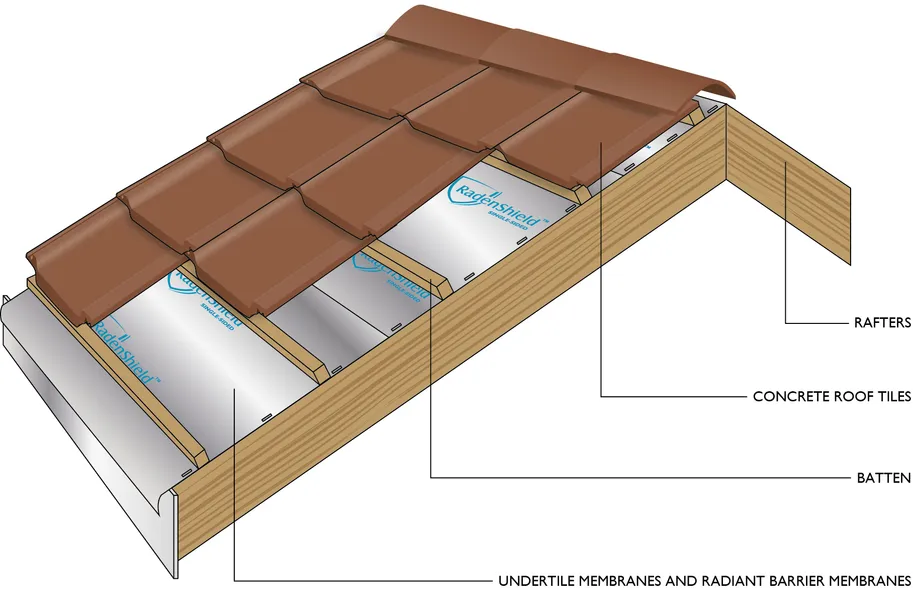Our country pages
Africa
Europe
Search
RadenShield benefits

RadenShield™ aluminium membrane functions as an underlay with the added benefit of reflective insulation. It is the recommended membrane for the compliance with the newly published National Building Regulations SANS 10400-XA: 2021 Ed 2 Energy usage in buildings. The reflective properties go beyond the durability of the roof structure, by aiding indoor climate comfort and reducing energy consumption of household heating and cooling appliances. Radenshield™ can be used for residential and industrial roof applications.

The most important environment factor which affects the satisfactory performance of roofs is wind gusting. During short-term wind gusts, pressure differences occur between the roof space (loft) and the outside of the roof covering. The result is a wind force that causes the total or partial removal of the roof covering allowing further damage by natural elements.

The working performance of the roofing underlay substantially reduces the lifting forces on the roof covering. In addition the underlay brings definite advantages to the building. In essence an underlay is an essential component of a pitched roof and should be considered an investment and an insurance for a weather-tight roof. If a roof structure is fitted with an underlay of suitable quality and is tiled according to the required specifications, it will withstand excessive wind speeds.
Under strong wind gusts the uplift on the roof covering may be far in excess of the dead mass of these coverings, requiring both the roof covering and the total roof structure to be securely fixed to prevent the roof and/or covering from being lifted and torn from the building. Roof pitches below 30° results in suction on both the windward and leeward sides of the roof. This suction or lifting force, particularly on a low pitched roof, is often the most severe wind load experienced by any part of a building. Wind tunnel tests and practical evidence have shown that the satisfactory performance of a roof, and a tiled roof in particular, depends on the complementary function of the roof covering and the underlay.
A SUITABLE ROOFING UNDERLAY WILL AFFORD
- An increase in thermal insulation resulting in energy savings during winter and summer.
- Reduced dust contamination in the loft space, hence allowing it to be utilised as a storage area.
- Minimised water ingress and damage resulting from hailstones melting in valleys, concealed gutters, etc.
- Protection against roof leaks in the event of damage to the roof covering.